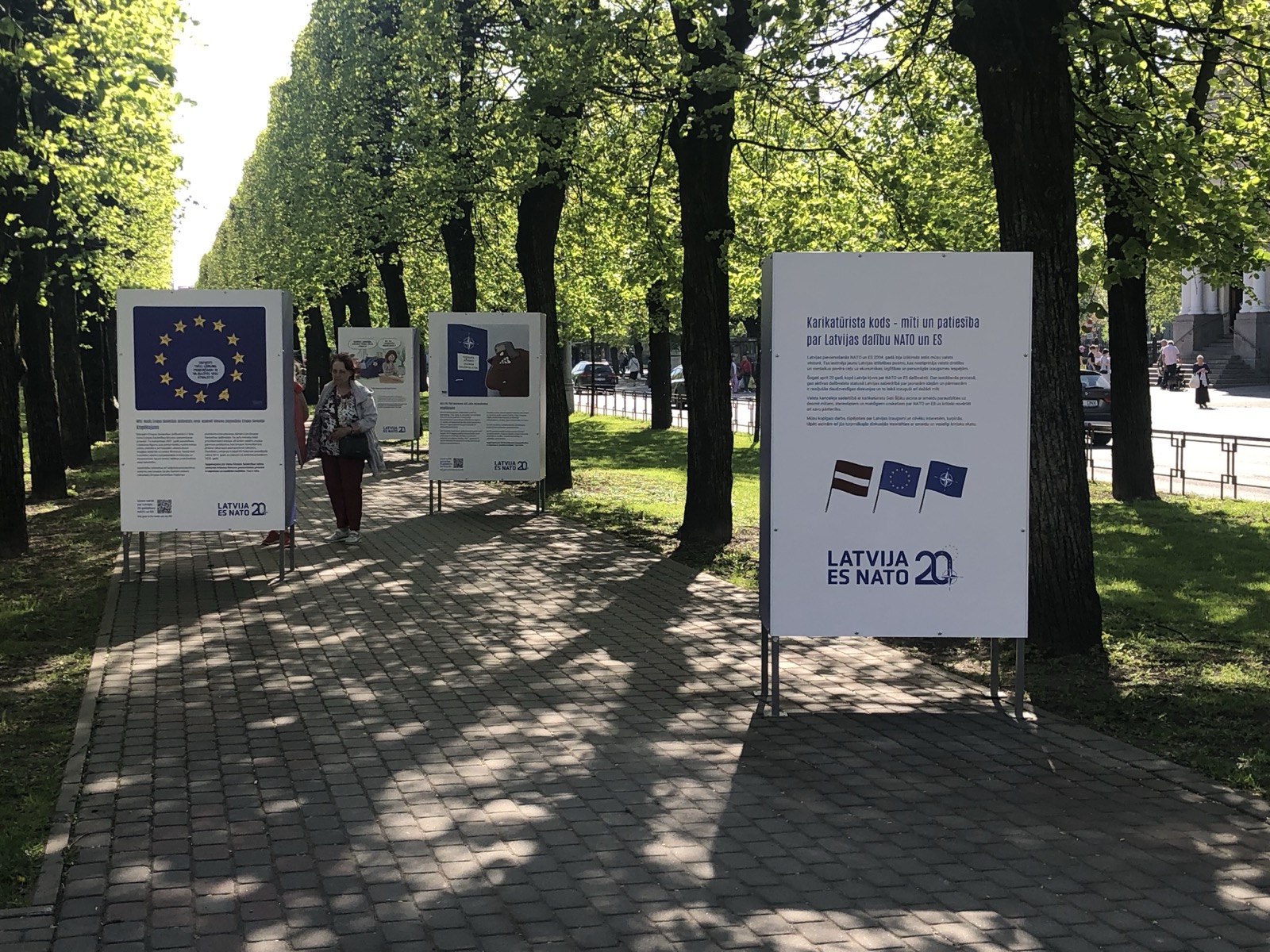In Poland the first days of May are holidays (collectively called Majówka): International Labor Day is May 1, and Polish Constitution Day is May 3. My University is closed for three days, and I happen to have no Monday classes this semester, so I decided to fill my six days off with a trip to Lithuania and Latvia.
- Monday, 29 April 2024
- Wednesday, 1 April 2024
- Thursday, 2 April 2024
- Friday, 3 April 2024
- Saturday, 4 April 2024
Monday, 29 April 2024
Click here to load all images for this day.

Pre-travel photo. Last year I visited Croatia over Passover because the University had days off for Easter. This semester I had no days off during Passover, but I did host two Seders (one on the first night and one on the last night)! My apartment is small, so I could not have everyone at once.
Wednesday, 1 April 2024
Click here to load all images for this day.
Since this is a relatively short vacation, I decided to fill as much of it with the trip as possible; that means a 5:00 AM flight. (Also, that flight was much cheaper than the 10:00 one.)


I often doing a walking tour on my first day in a new city, and this was no exception (the bus in the photo is for a different tour—we were only walking). In this case, it was a good way to make sure I stayed awake!
May 1, 2024 happens to mark the 20th anniversary to the day of Lithuania joining the EU (along with Czech Republic, Estonia, Cyprus, Latvia, Hungary, Malta, Poland, Slovakia, and Slovenia).


The Presidential Palace was initially constructed in the 14th century. It has of course seen many renovations since, which is fitting because Lithuania’s government has also changed many, many times. According to our tour guide, the government changed 15 times in the 1900s alone.
Speaking of changing governments: Užupis is a neighborhood within Vilnius that is popular with artists (statues, paintings, and more dot the entire area), and as a joke, the district declared itself an independent republic for the single day of April 1, 1997. Even today you can get a passport stamp and special currency, which is only valid for ordering beer in Užupis.


Some art along the border of Užupis.
Kayaking along the Vilnia River, from which the city of Vilnius derives its name.


I thought Poland had a lot of churches (and indeed it does), but Lithuania—or, at least, Vilnius—seems to have even more. On the way to any of the ones on this signpost I would surely pass several others.
From 1569 to 1794, Lithuania and Poland were a single nation, but their histories in the late 1900s are very different, as Lithuania was fully part of the Soviet Union while Poland was a satellite state. As such, many churches throughout Lithuania were repurposed as municpal or commercial buildings. Today the Church of the Blessed Virgin Mary, pictured, is both a church and a popular resturant.


There was also an enormous Jewish population in Vilnius pre-World War II, but it is now extremely small. (By the way, the word for Jew in Lithunian is Žydas and in Polish is Żyd, but this is wholely unrelated to the name Zydney, which actually comes from the Polish word for wheat, żytni.)
Several streets in Vilnius have these black-and-white murals of people. By scanning a QR code near each one you can see an animated version as well as information about the subject.


Church of St. Anne, an impressive example of Gothic architecture from the 1500s, did remain open during the Soviet era. Next to it, a monument to Adam Mickiewicz (a poet with Lithuanian / Polish / Belarusian roots) was constructed in the 1980s.
Palace of the Grand Dukes of Lithuania, and on the left the Bell Tower of the Vilnius Cathedral.


Gediminas (1275-1341) founded Vilnius and was the Grand Duke of Lithuania for 25 years, doubling the country’s size during that time.
My AirBnB was quite large (the doorway at the back leads to a separate kitchen, and behind me there are closests and a bathroom). Since my day started so early and included several hours of walking, I enjoyed a nice nap.


For dinner, one of the national dishes of Lithuania: cepelinai, literally “zeppelins”, are potato dumplings stuffed with ground meat. Absolutely delicious.
Thursday, 2 April 2024
Click here to load all images for this day.
Lithuania and Latvia and northern Poland all have a signficant amber market. Most Batlic amber is actually excavated from Kaliningrad, but it quickly makes its way to the neighboring regions.


The previous photo was from a random shop selling amber, of which there are many. This one is from a small museum all about Baltic amber, underneath a gallery/shop.
It’s hard to see in the photo, but there is a fly in the left stone and an ant in the right one. For diamonds, people value purity and lack of imperfections, but for amber the “inclusions” (fossils) make a piece more valuable.


The Bernardine Gardens were originally formed in the late 1400s to be adjacent to a monastery. It has been closed and reconstructed three times since then, with a major project in 2013 restoring it to its 1800s (not 1400s) appearance.
Large fountain at the center of the Bernardine Gardens.


Ajacent to the Bernardine Gardens is the large Kalnai Park (lit. Park of Hills). Within it, the Hill of Three Crosses has metal steps on one side and wooden on the other. The wooden steps are much nicer, both in appearance and in how sturdy they felt.
At the top of one of the highest hills is the Three Crosses Monument, which supposedly (the historical accuracy is unclear) honors a group of friars who were beheaded by pagans at the site in the 1300s. This version of the monument was built in 1898 after a previous version was destroyed by Soviets.


The Three Crosses Monument itself was underwhelming for me, but the view from the hill was really great.

Selfie from the Three Monuments Hill. Behind me you can see the Palace of the Grand Dukes and the Gediminas Castle Tower (more detail below).
The Gediminas Castle Tower is visible from most of Old Town Vilnius. In addition to being a military fortication and now a museum (same as many castles), it was also the city’s first telegraph building in the 1830s.


An exhibit within the Gediminas tower about the Batlic Way, a peaceful an anti-Soviet demonstration in 23 August 1989 in which almost two million people joined hands to form a chain through Lithuania, Latvia, and Estonia.
In the cellar of the Castellan’s House at the foot of Gediminas hill has a relief map of Vilnius in the... I think 1500s? I forgot to take a photo of the exhibit panel nearby, which is how I usually put together the info in the blogs.


I returned to the Palace of the Grand Dukes of Lithuania, and I’m glad I did because I captured this adorable little train that circles around the area.
In the courtyward of the palace was a temporary exhibit about the January Uprising of 1863-1864, an ultimately-unsuccessful attempt to end Russian occupation at the time. The insurrection began in Warsaw but soon spread to Vilnius and then to other cities in modern Belarus and Ukraine.


Inside the dome was a film about the 1863 Battle of Węgrów, a town in eastern Poland. The Polish army successully took the town from Russian control but suffered heavy losses in doing so.
The Vilnius Cathedral is right next to the Palace of the Grand Dukes.


Interior of Cathedral.
The other side of the Presidential Palace has a cool sculpture, although I do not know the artist. I tried to check on Google, but it seems the sculpture was not there a month ago.


The Pilies Galerija in Old Town Vilnius.
For lunch, kepta duona, which is fried garlic rye bread. How have I never heard of this before?!


Although art and history are nice, I like to find museums with less typical focuses. In Vilnius there is a Toy Museum, most of which is interactive.
The Toy Museum has everything from wooden toys...


...to dolls (these ones are of course relatively modern, but archeologists have found dolls from as early as the 1300s in Lithuania)...
...to mechanical arcade games. There are no fully elecronic arcade games or video games at the Toy Museum.


I was not planning to stop inside the The Church of All Saints, but as I passed I heard organ music and decided to check it out. The interior has over a dozen Late Baroque altars and decorations, which are surprisingly colorful.
Friday, 3 April 2024
Click here to load all images for this day.
I left Vilnius early on Friday, walking past the Saint Parasceve Orthodox Church. Later in the day these booths will all be open with people selling various goods.


One last thing before leaving Vilnius: the first use of the word “meter” or “metre” (actually, metro because it was in Latin) for a standard unit of length appears in a 1675 book published in Vilnius by Tito Livio Burattini. This monumnet to him was unveiled in 2022.
Originally I had planned to take a train to Riga by myself, but then I remembered that there are often “transfer tours” between major cities, so I decided to do that instead. Sometimes these are in vans or busses, but there were only four of us this day so it was just a normal car, which I think is much nicer.


My route from Vilnius to Riga, visitng the Hill of Crosses, the Rundale Palace, and the Bauska Castle along the way. These stops are the big advantage of a transfer tour!

The Hill of Crosses. A few crosses were here as early as the 1830s, but there was a major increase during Soviet times: people could not display crosses on their homes, so many left them on public land rather than destroy them. This particular spot was mostly known only within Lithuania until a 1993 visit by Pope John Paul II, from which it gained international recognition.
It's hard to overstate how many crosses there are; estimates put it at around 200,000. There are so many small ones even along the various staircases up and down the hill (it's really two hills, though both are not very tall).


At the top of one of the hills is an altar of sorts. Many crosses in this area also have dedications or inscriptions nearby.
My attempt at being artistic (and also my effort to find the smallest cross—the one in the foreground is not much larger than a €1 coin or US quarter.)


During the Old Town tour, our guide mentioned that Lithuania was one of the last countries to convert to Christianity from Paganism. As such, many crosses in Lithuania feature rays of sun since this was more familiar symbology to pagans (of course these designs also appear around the word, but I think they are more common in Lithuania).

Panorama of the one part of the Hill of Crosses.
I was too slow with my camera to capture the road sign upon entering Latvia, but this is just a few moments later. Physical Latvian flags use a very dark red, but in 2018 the government approved a lighter color to be used in other media, in particular for official digital versions of the flag.


The Rundāle Palace.
Coincidentally, there was an auto show on the road leading to the palace when we arrived (it was gone by the time we left).


The tour begins upstairs within the palace.
vestiblue, with a view into the main room


ceiling

pottery
The White Room was originally built as a chapel within the palace. It had its own entrance (now closed) so that people could attend without walking through the rest of the building.


These still lifes are by a variety of Belgian and German painters in the 1700s.
I would love to have a study like this. By the way, the globe is French (Félix Delamarche), the desk is German, the paintings are Dutch (Alexander van Bredael), the fabric of the walls is Estonian.


dining room
game room


The Hunting Room.
Each room in the Rundāle Palace has a small stand with an interactive screen that gives a ton of detail on the items in the room, such as the weapons in the cabinet in the previous photo.


The Dutchess's Study. All the porcelain vases on the left are for potpourri.
The Dutchess's Boudoir


This display of period costumes is actually from a seperate tempoary exhibit in another part of the palace, but the photo seems more appropriate at this spot.
Princess of Courtland Elisabeth Biron (2021), Prince of Courtland Ernst Johann Biron (2007), Duke of Courtland Peter (1774), his first wife Caroline Louise formerly Princess of Waldeck (1765), his second wife Yevdokiya Yusupova (1770), and his third wife Anna Charlotte Dorothea (1782).


When I passed through the main room on my way out, a large tour group had recently arrived.
Underneath the palace is an exhibit about its design and construction.


The small cafe under the palace had a suprisingly delicious rhubarb tart. (There is also a larger restuarant in a separate building, but I didn't go there since I wanted to spend as much time as possible in the palace and gardens.)
Behind the Rundāle Palace is a large gardens (separate ticket), which I actually enjoyed more than the palace itself.


The Rundāle Gardens have several benches and several posts of the map with “you are here” stickers, which can be helpful since some of the hallways between hedges can look similar.
In a few more weeks the background plots should be filled with roses. Fortunately there are many varieties of tuplips already in bloom throughout the garden.


When I saw the maze icon on the map I was thinking of something more like a tall corn maze, but this is nice too.
I quite like ridiculously-shaped trees for some reason.


A man-made river surrounds the gardens.
Of course a large garden requires a lot of gardeners to maintain it. There were probably 20 people working throughout the garden while I was there.


An ampitheater. I don't know how often there are actual concerts or events here, but it's certainly a nice venue.


A view of the palace through the gardens.


More tuplips. And me, of course.
Bauska Castle. I will add descriptions to these photos at a later time.








windows
windows


viewing platforms
Two different rivers surround Bauska Castle.


Unlike at Rundāle, most of the signage at the ruins of the Bauska Castle is only in Latvian.




Finally arrived in Riga. (My bridge photo was blurry, so this one is from the internet.)
My AirBnB is an apartment, but from what I can tell at least half of the apartment in this building are short-term bookings: the small boxes are key lockers that provide the physical apartment key after someone enters the code.

Saturday, 4 April 2024
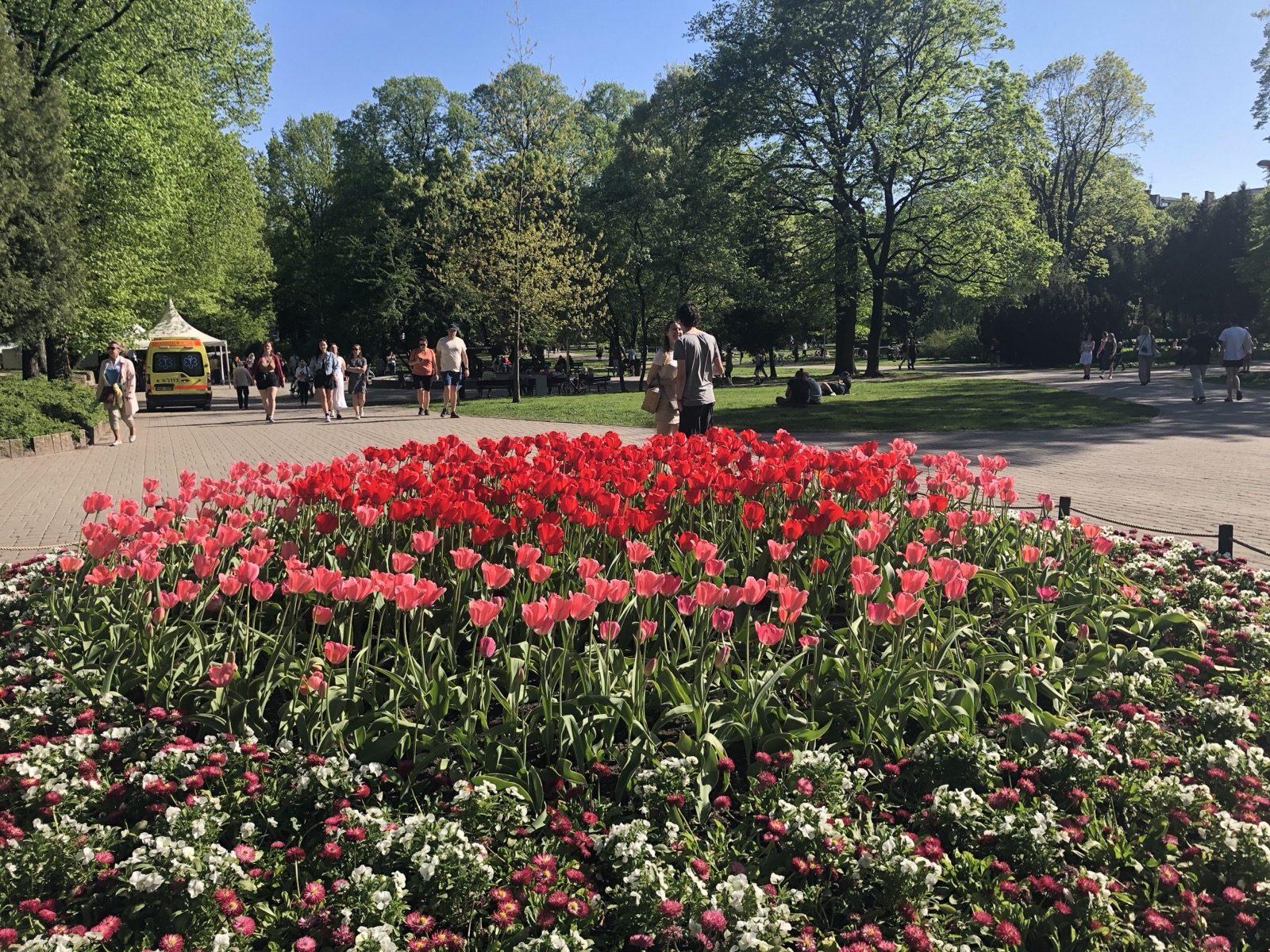
Starting with a walking tour again (on the way to the meeting point, I passed these flowers in the the Vērmane Garden). Since I did an Old Town tour in Vilnius, I decided to do a different tour in Riga: one about the Art Nouveau movement in Riga, featuring buildings in the more modern part of the city.
The tour began at the Latvian National Opera, which is definitely
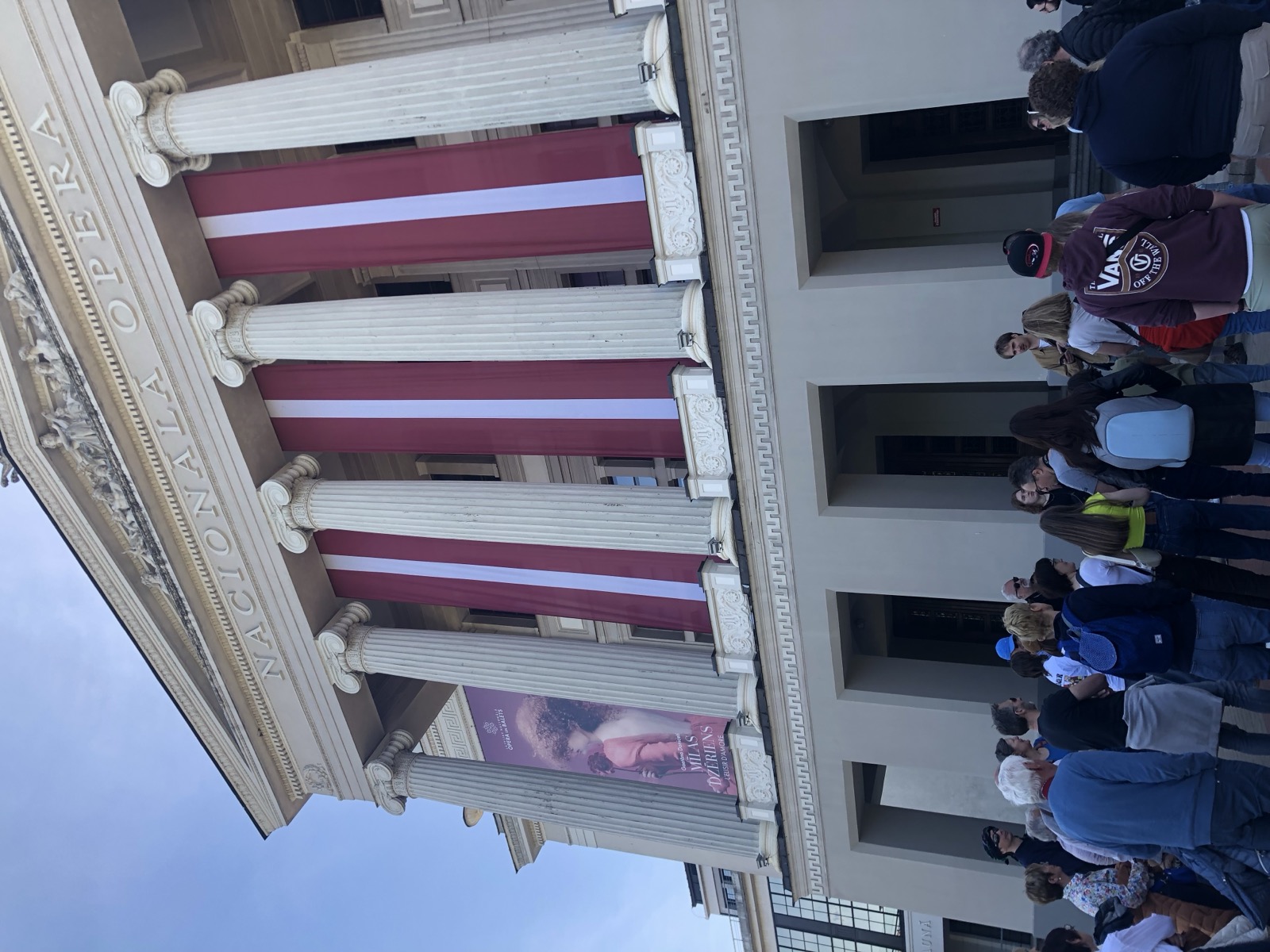
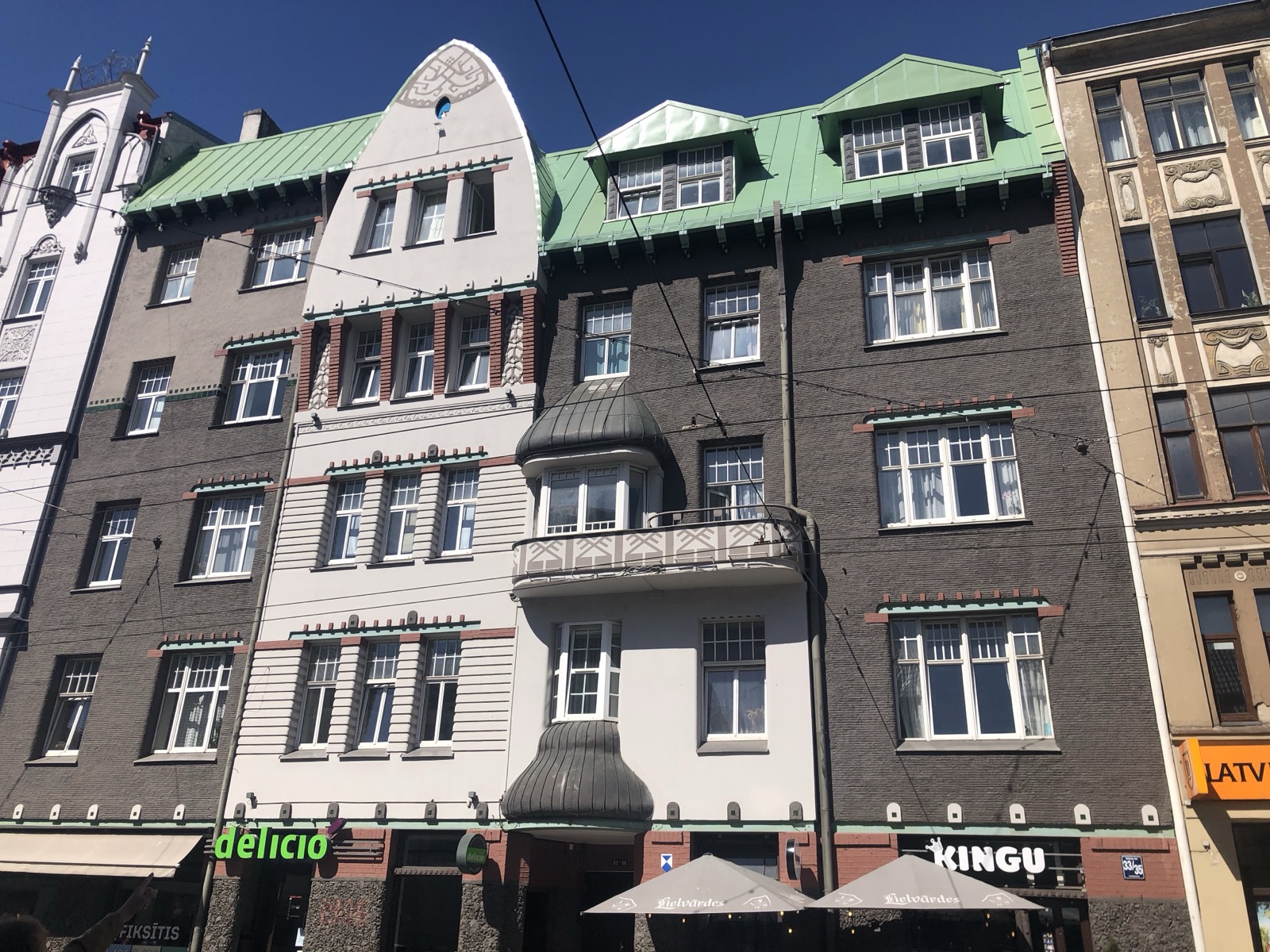
This one
The tour guide explaining some characteristics of Art Nouveau buildings, such as curved facades and large ground-floor windows.
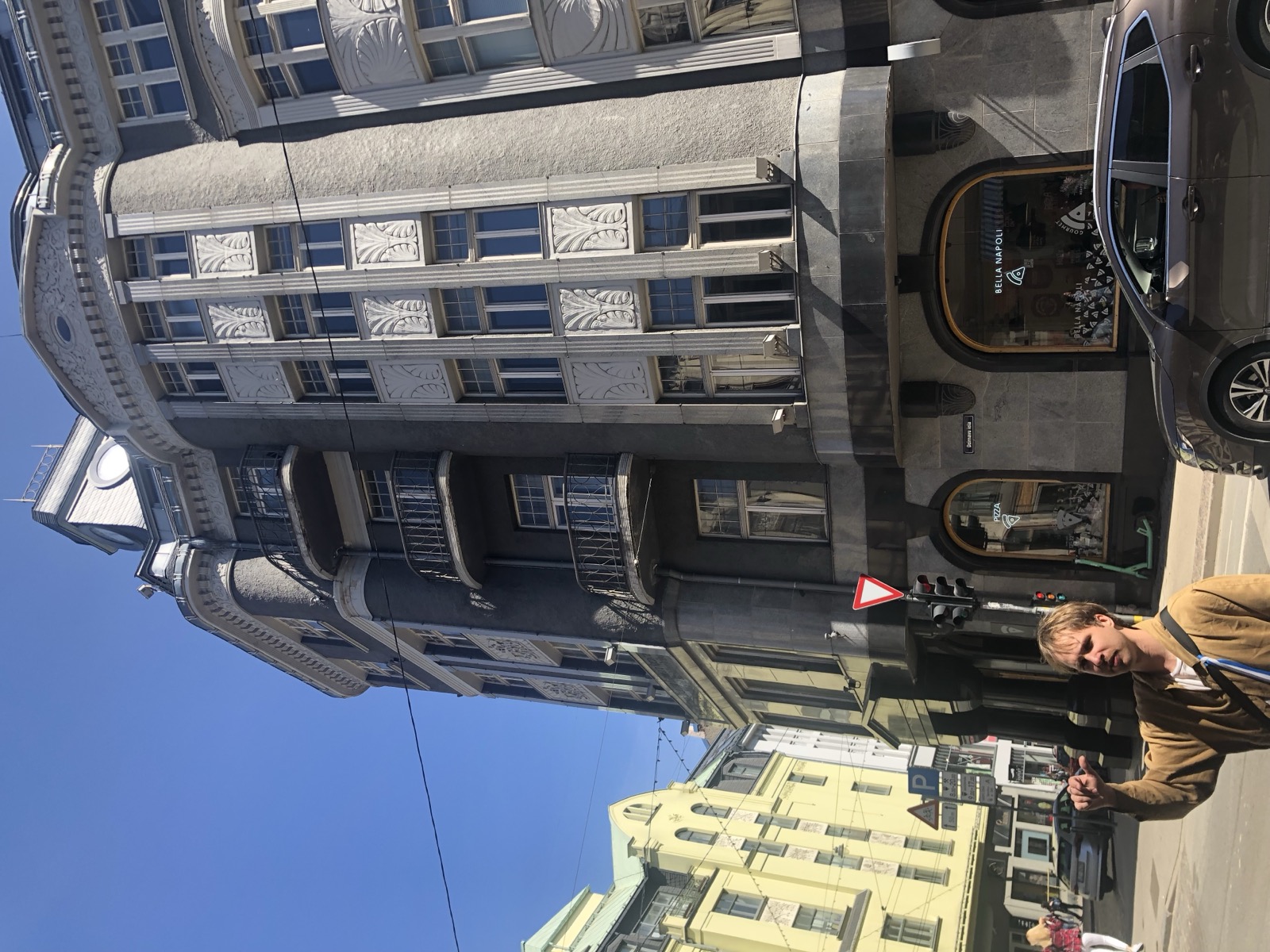
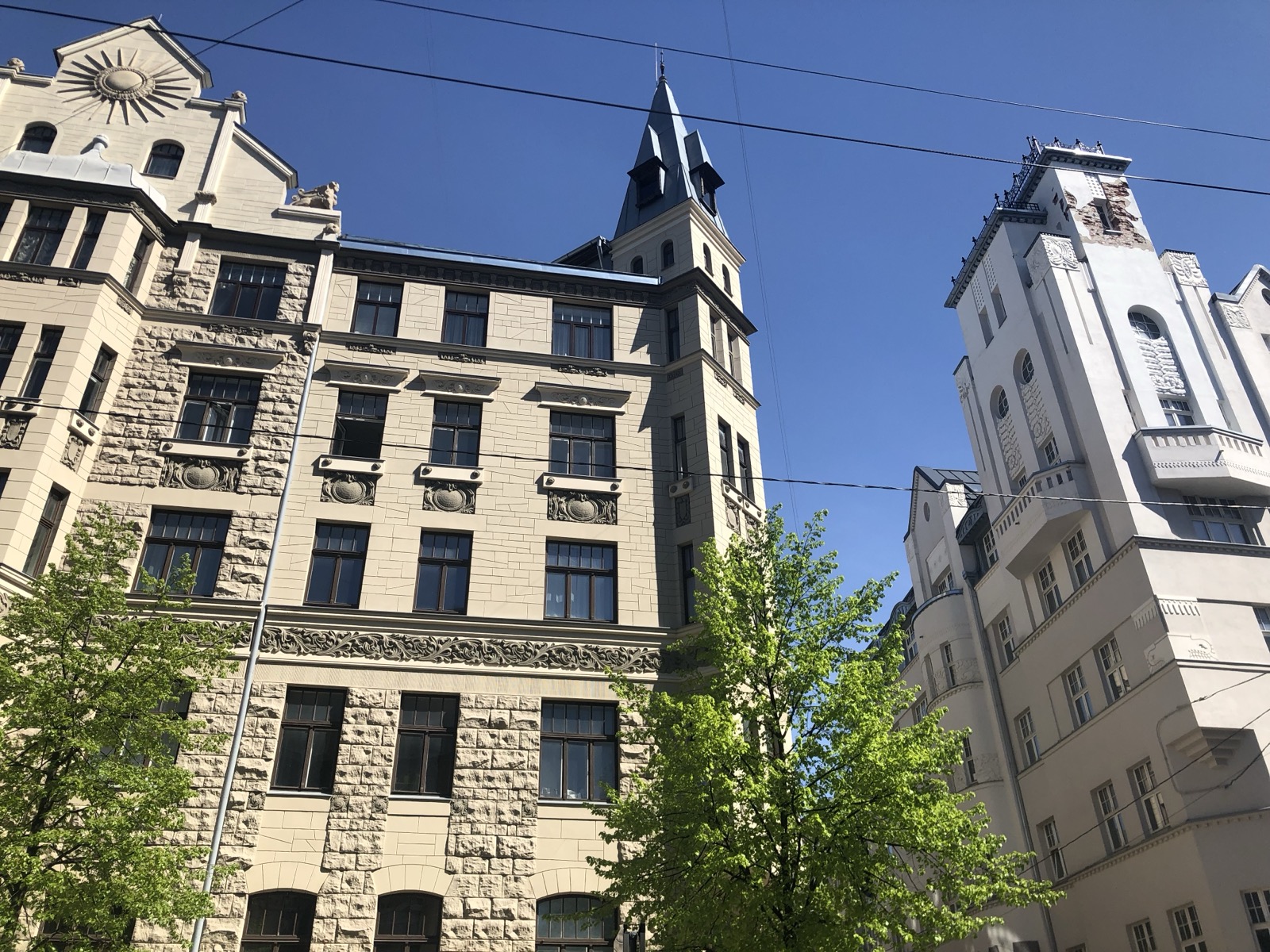
After the 1920s, many Art Nouveau buildings fell into disarray, as you can still see in the tower at the top right. This one was designed by Latviann architect Eižens Laube, later lived in Germany and the United States and wrote about how Art Nouveau was a regrettable fad.
Seven buildings called “St Gertrude's Church” have stood on or near this spot since the 1400s, including ones destroyed during invasions from Sweden (1605) or Russia (1700) or French (1812). The current building is in the Neo-Gothic style and is from the 1860s.
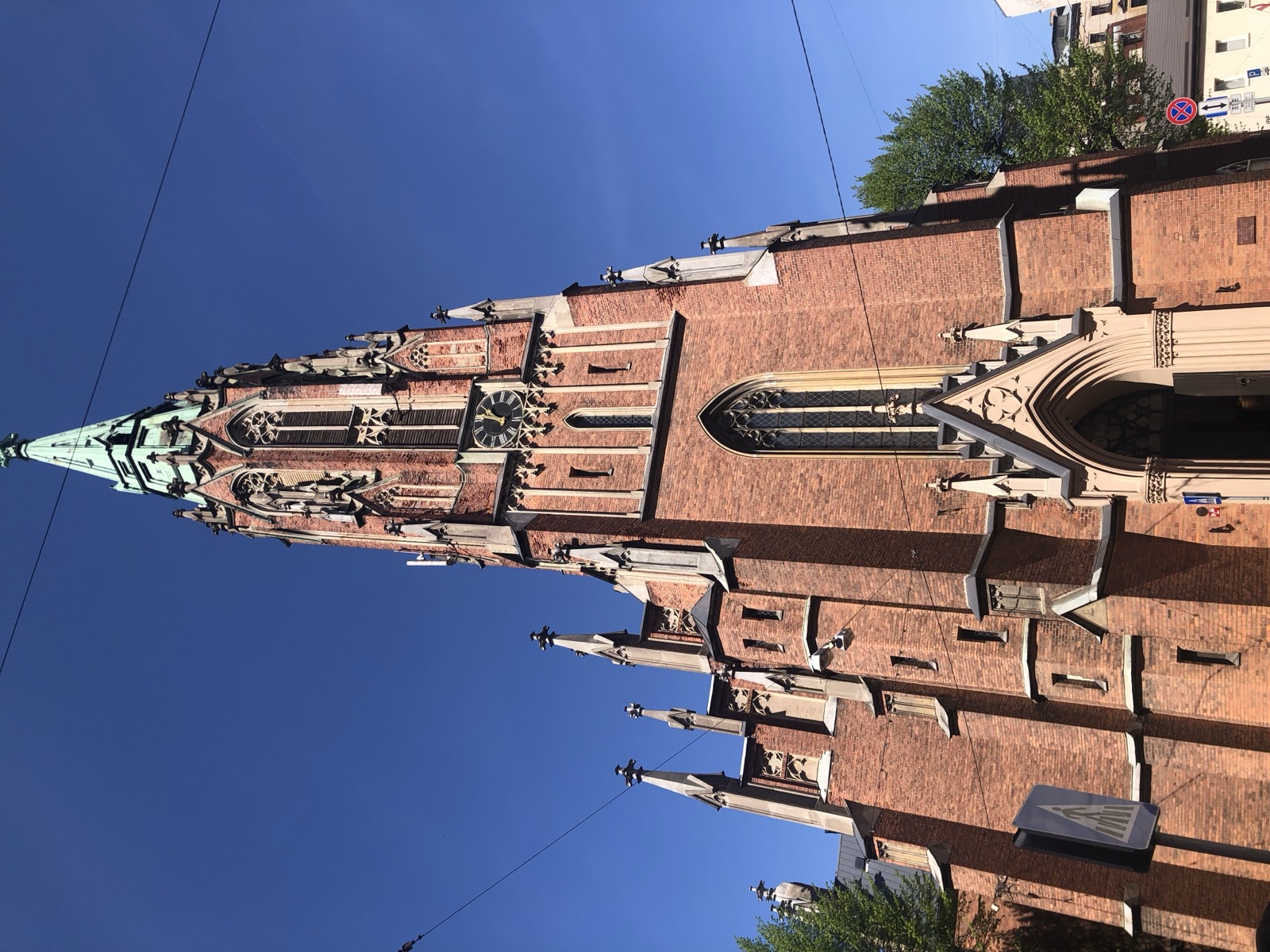
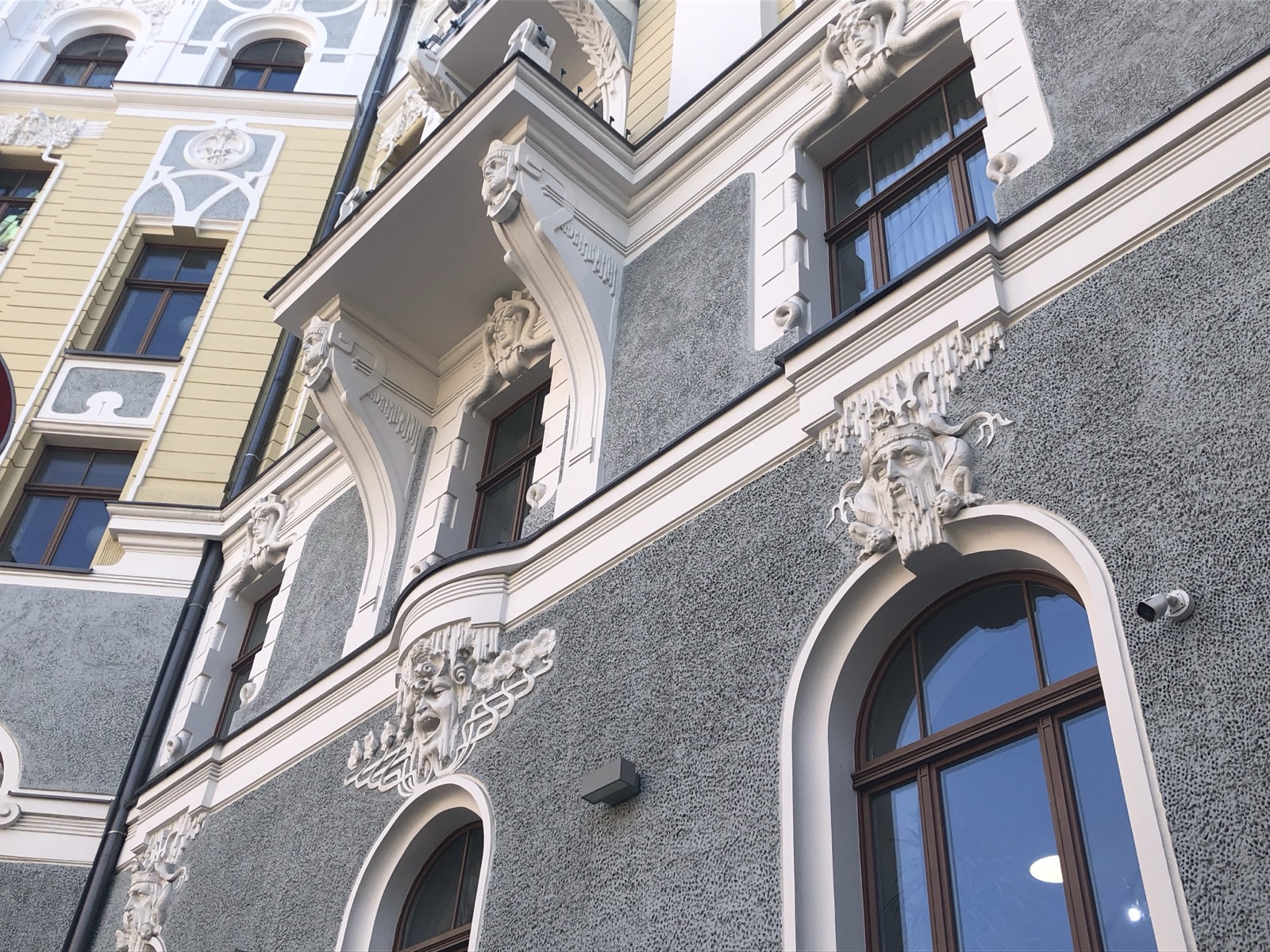
Directly across from St Gertrude's is this building. I don't think Lots-and-Lots-of-Screaming-Faces is the name of any standard architectural style, but that's basically what this building is anyway.
By coincidence, my visit to Latvia includes May 4, which is Latvian Restoration of Independence Day, celebrating independence from the Soviets in 1990 (not be confused with Latvian Indepdence Day, Nov 18, which celebrates independence from Germany and Russia in 1918). In this photo a band plays in front of the Freedom Monument (which, technically, honors soldiers killed during the 1918 War of Independence).
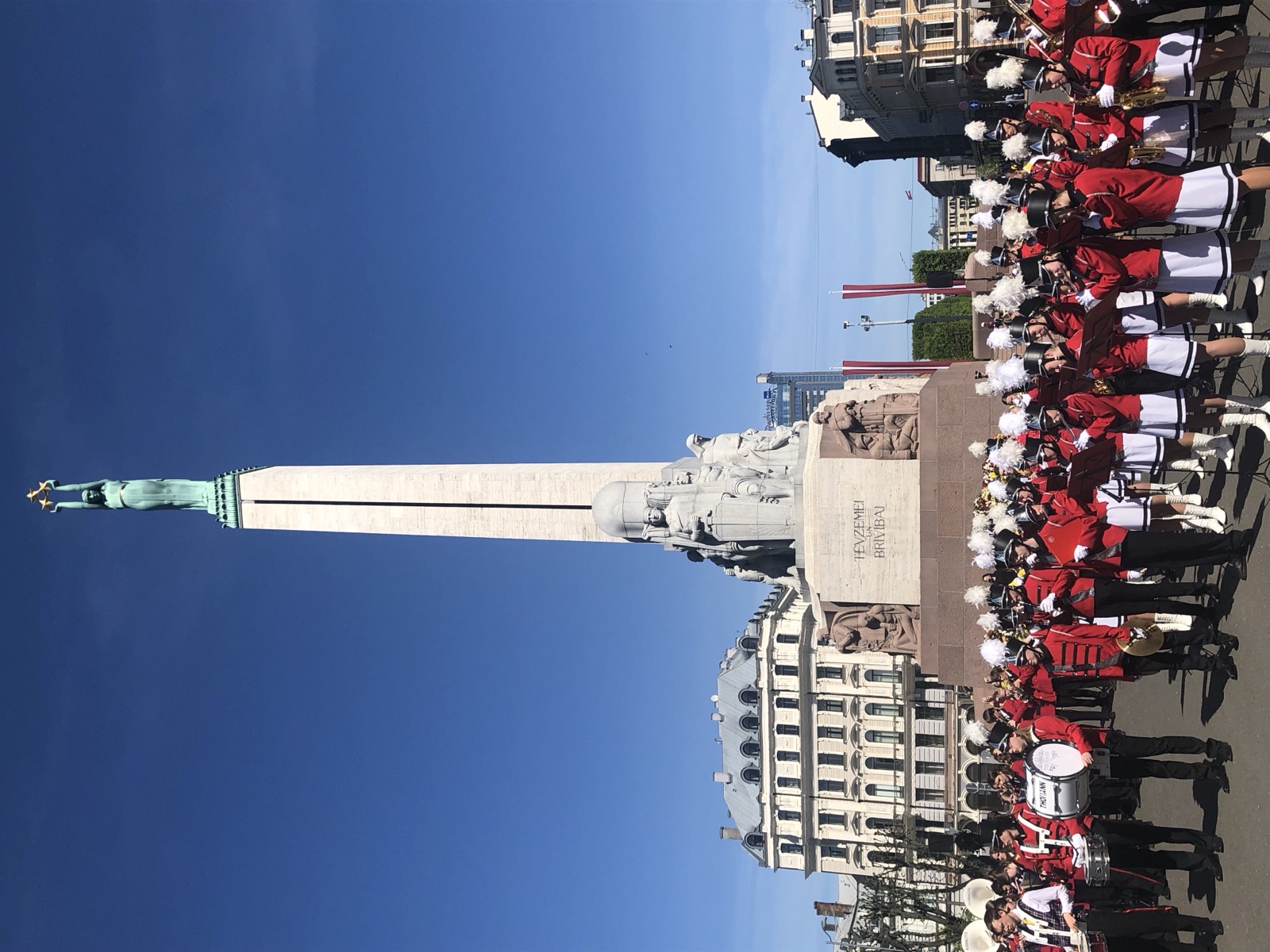
I have several videos of the concert, including some singing. I might add more later. CLICK HERE FOR SOUND.
There was also a parade, of course.
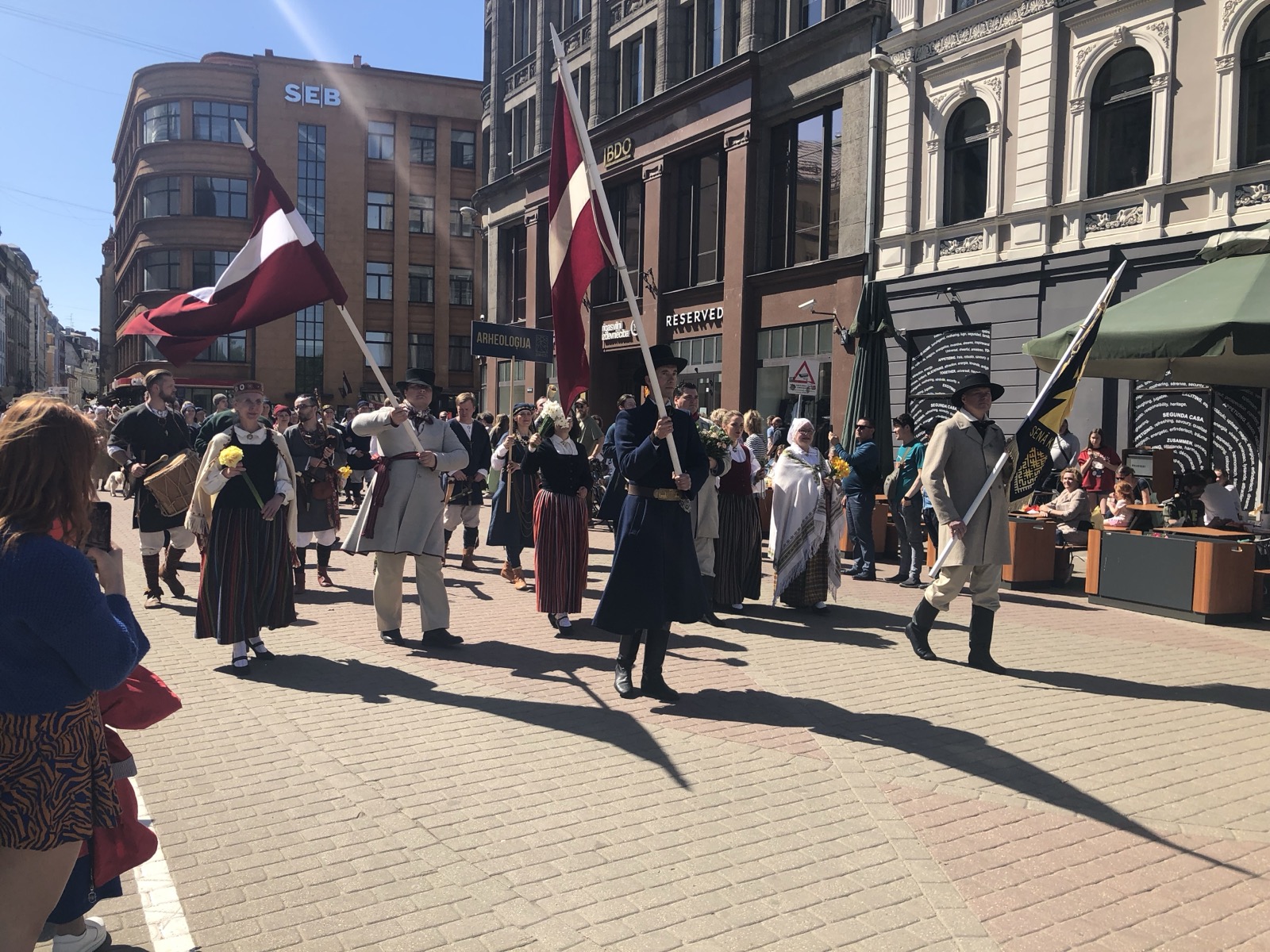
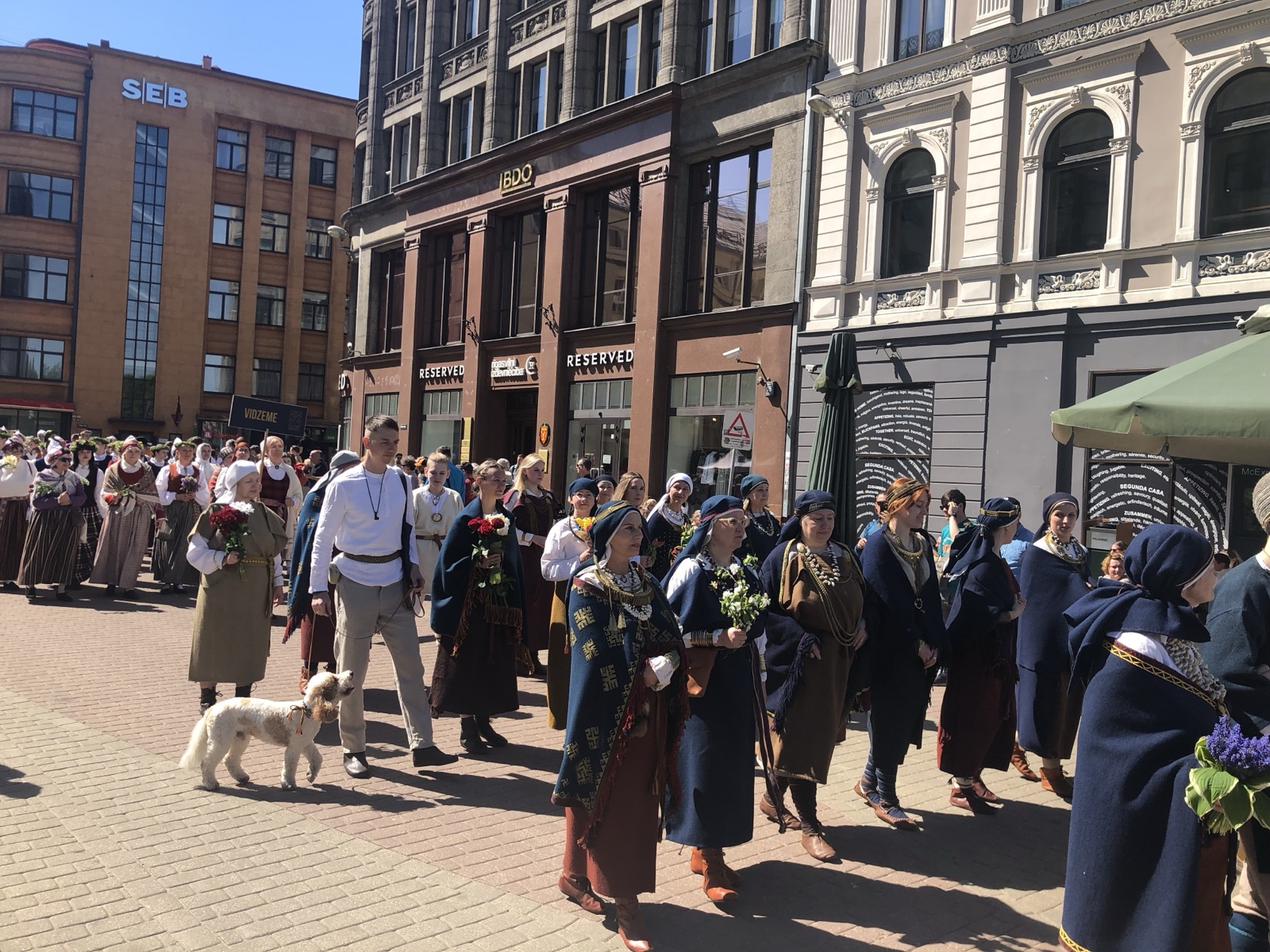
There was also a parade, of course.
Usually it's annoying to have glare or flares of sunlight in my photos, but this one actually looks pretty cool.
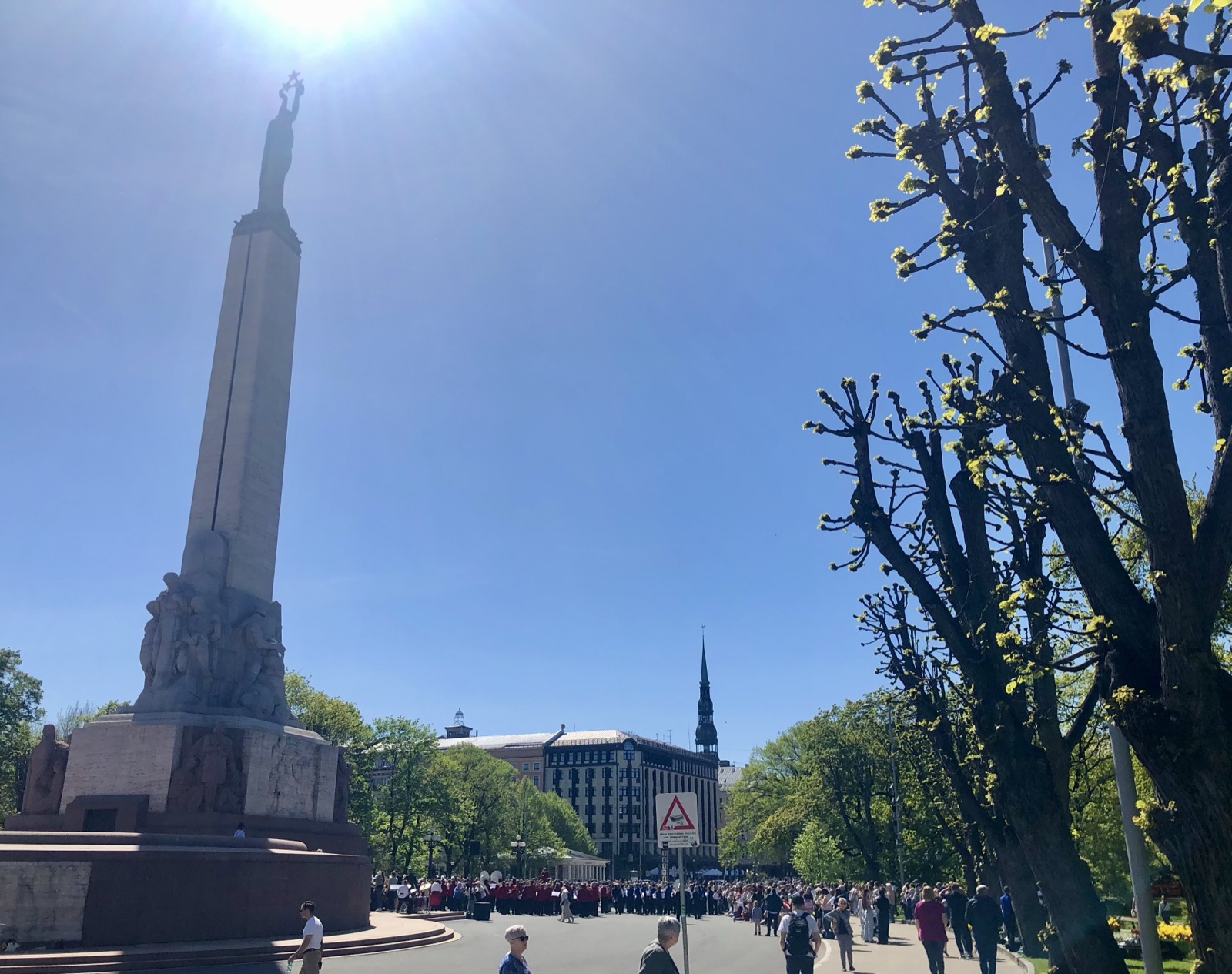
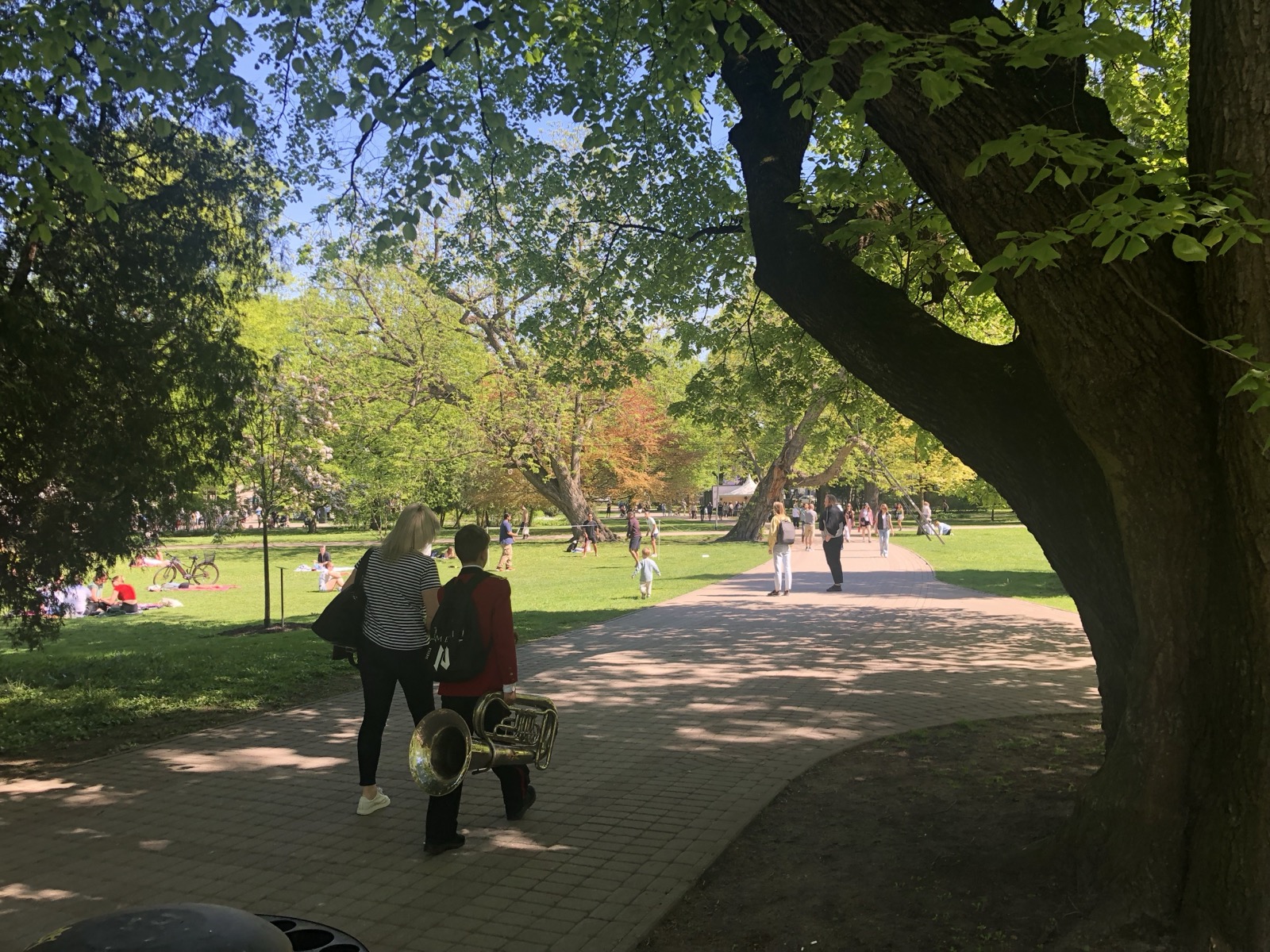
Walking through Vērmane Garden again, I passed a band member from earlier. It's always amusing when the instrument is almost the same size as the player.
Vērmane Garden, by the way, is the oldest public park in Riga. It was built (as Wöhrmann Park) in 1814 after the city of Riga intentionally burned down its lower-incoming housing outside the city walls in order to prevent the invading French army from using those houses as barracks.
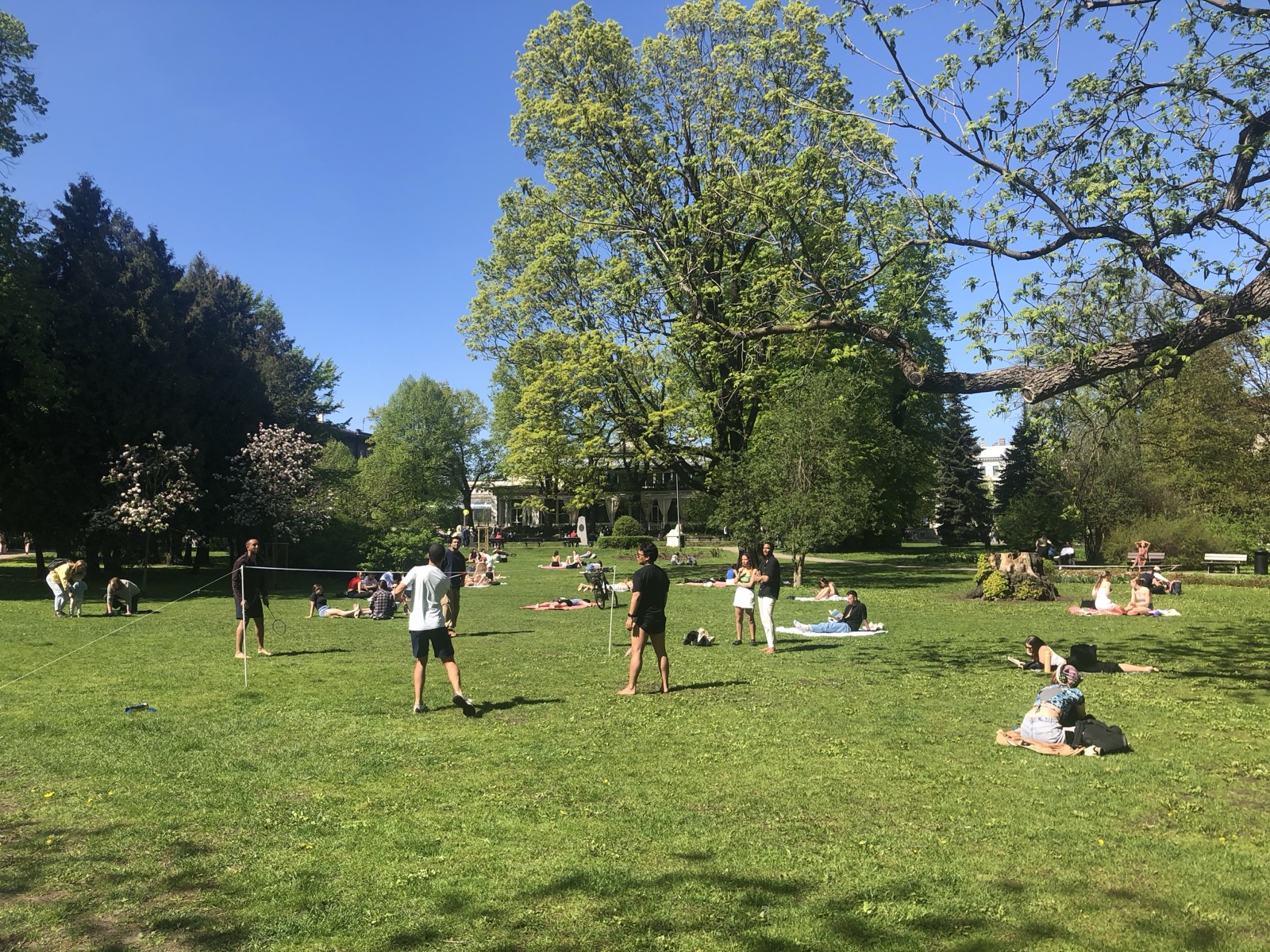
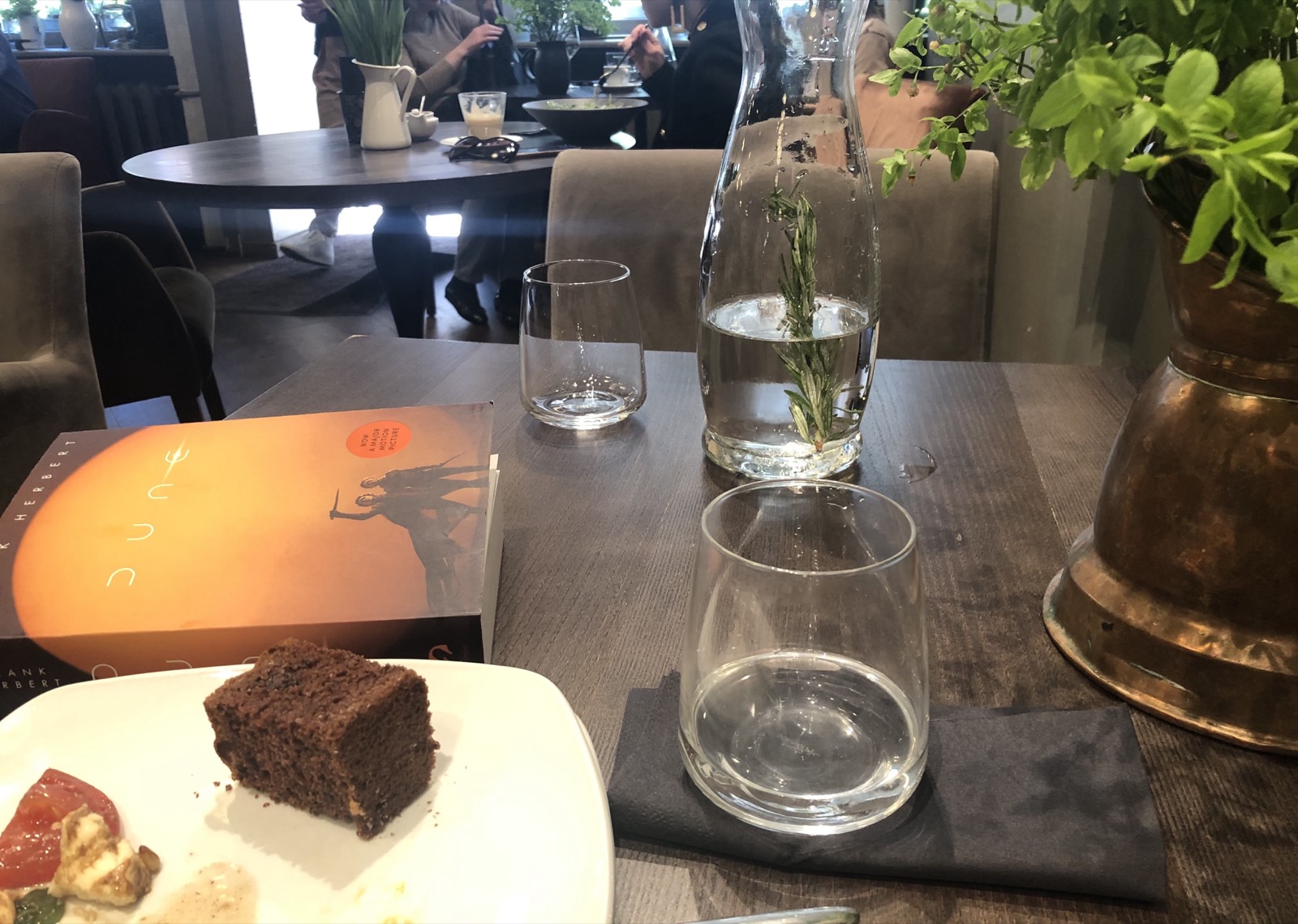
European restaurants often don't have waitstaff that are as attentive (or, depending on your mood, as annoying) as American restaurants, but the advantage is that you can stay at a table for literally an hour or more just relaxing.
The Video Game Museum, complementing the Toy Museum from Thursday.
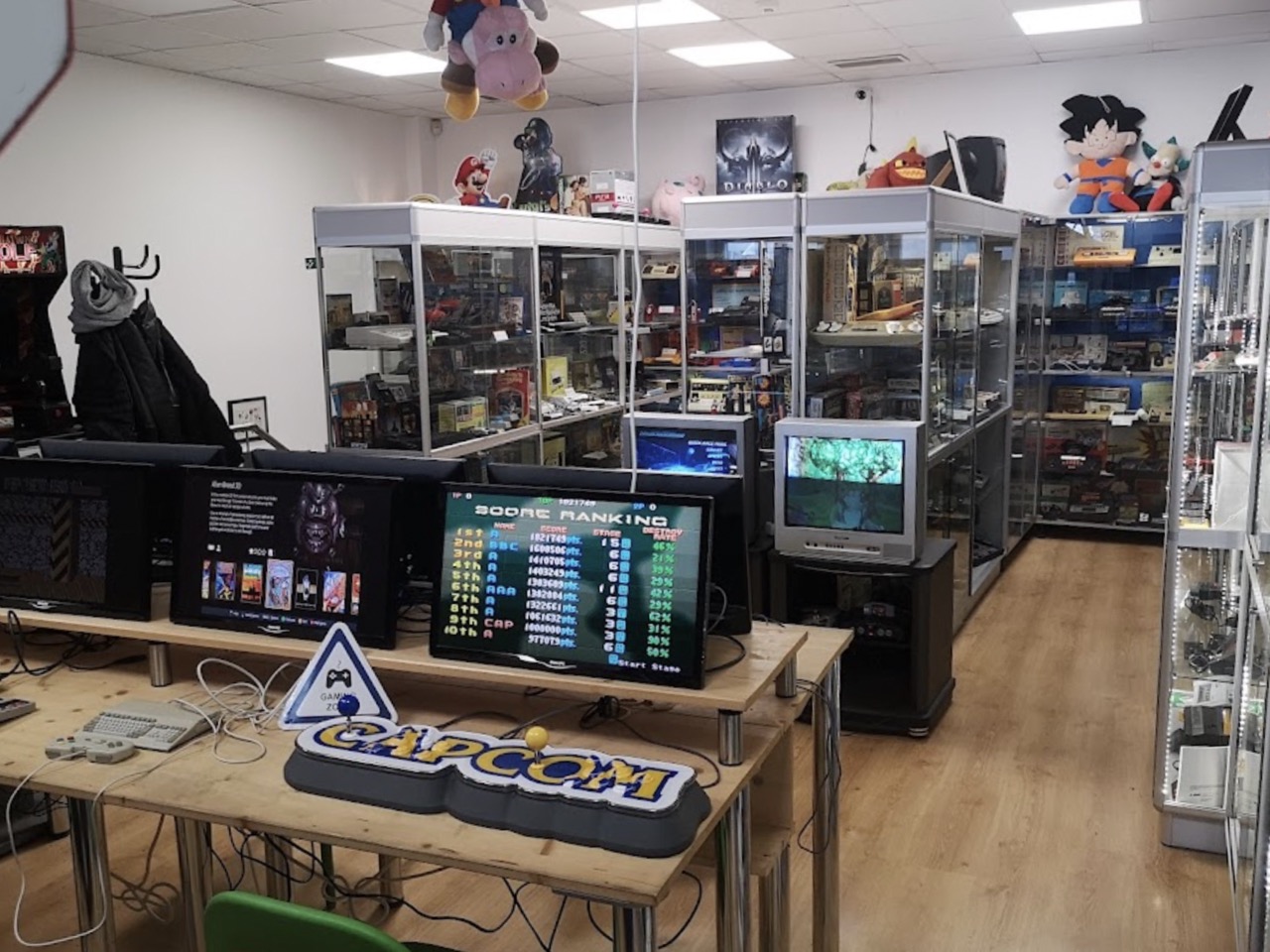

The headquarters of the Soviet KGB in Latvia from 1940 to 1990 was the so-called Corner House, which is now a museum about their operations.
The Corner House has tons of photos and documents—both handwritten and typed—detailing the activities of the police state and the lives of citizens.
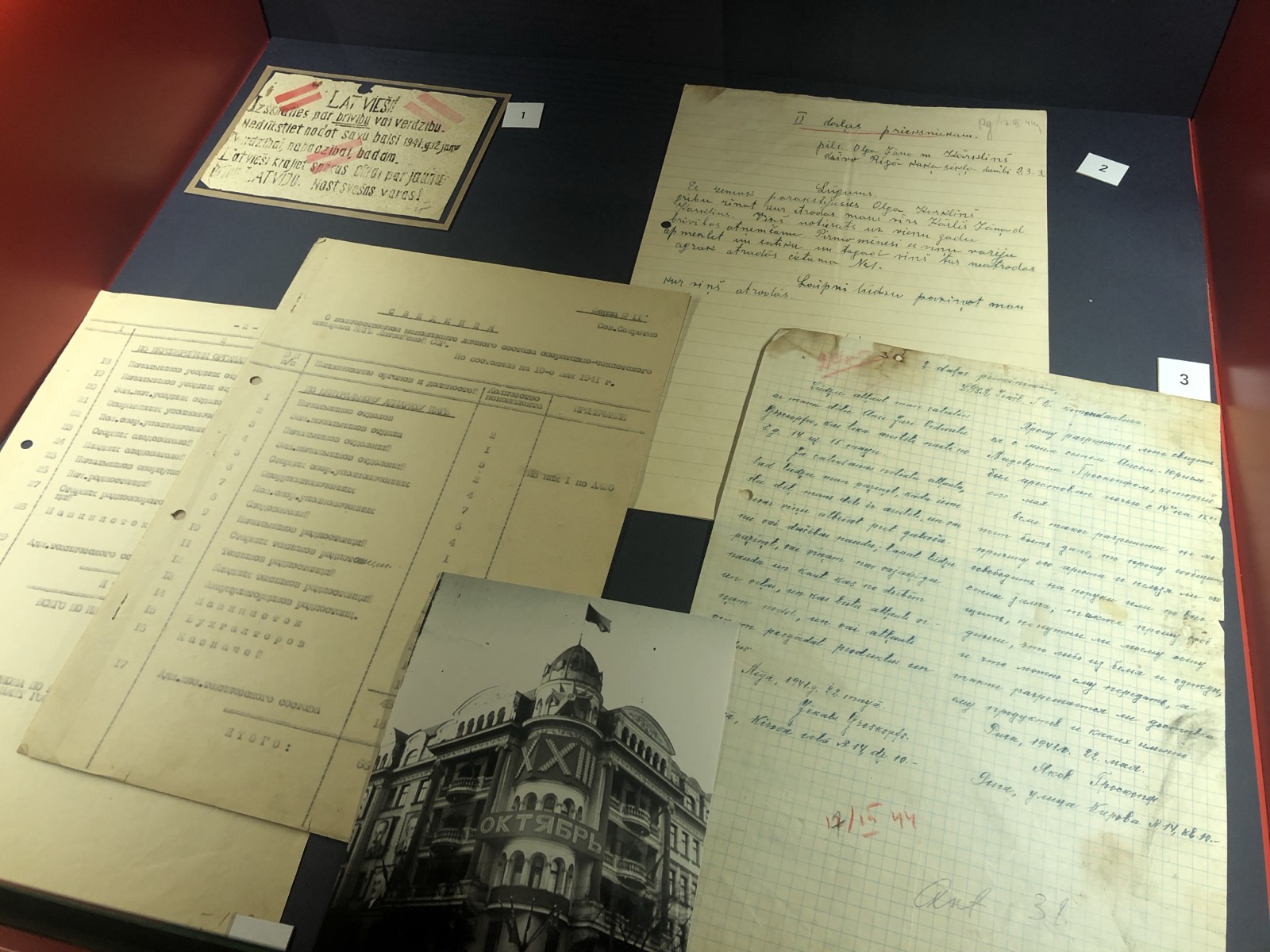
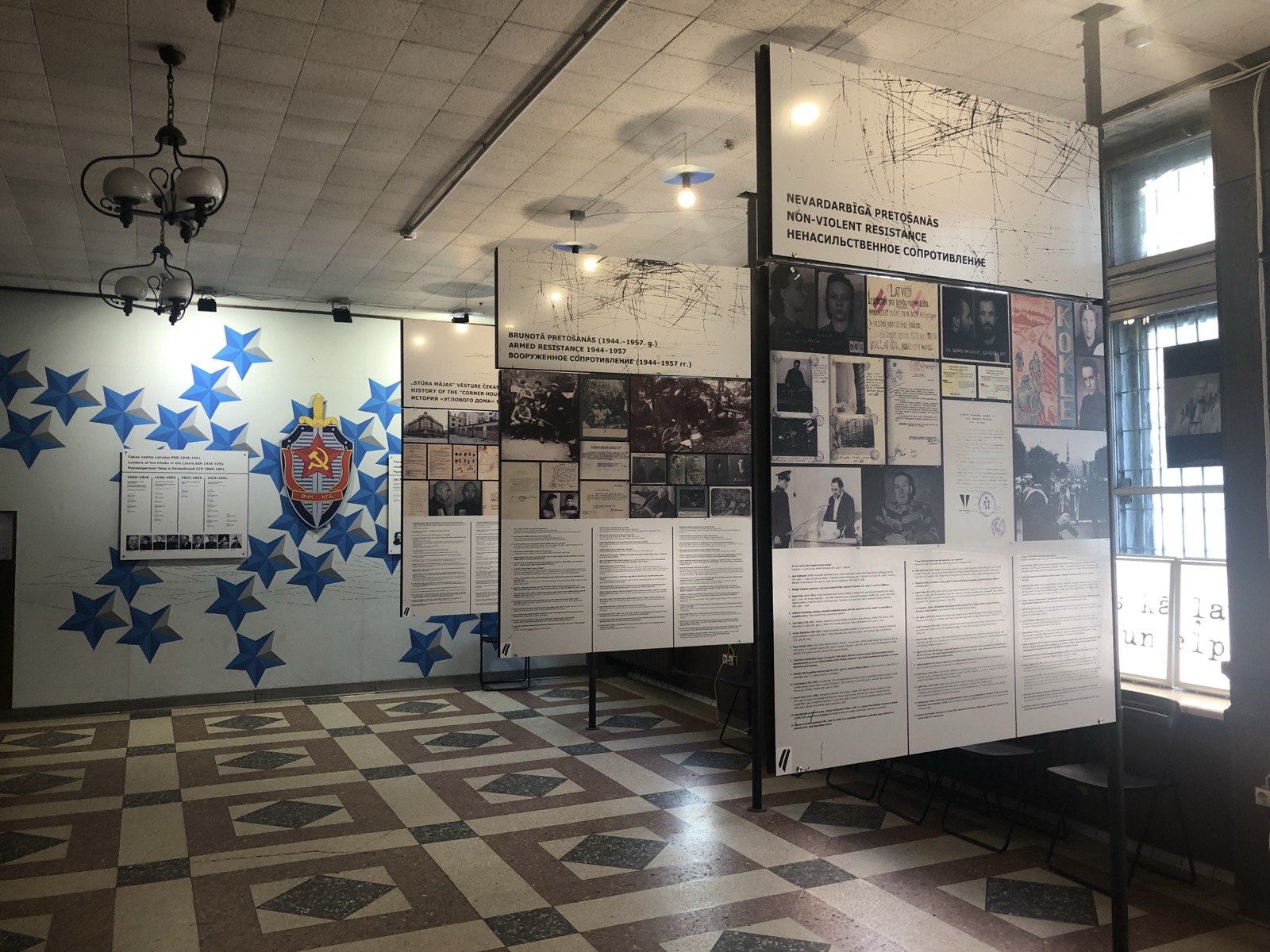
There are guided tours of the prison cells in the Corner House, but they were sold out when I arrived. So instead I can read a lot.
As I mentioned before, this is the 20th anniversary of several coutries entering the EU. I found this display during my walk back to my room.
